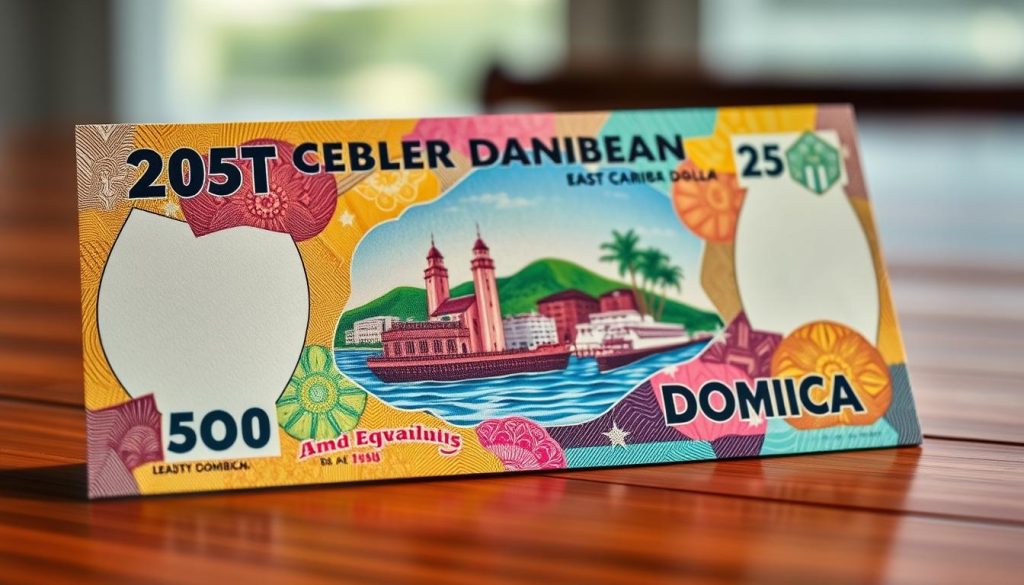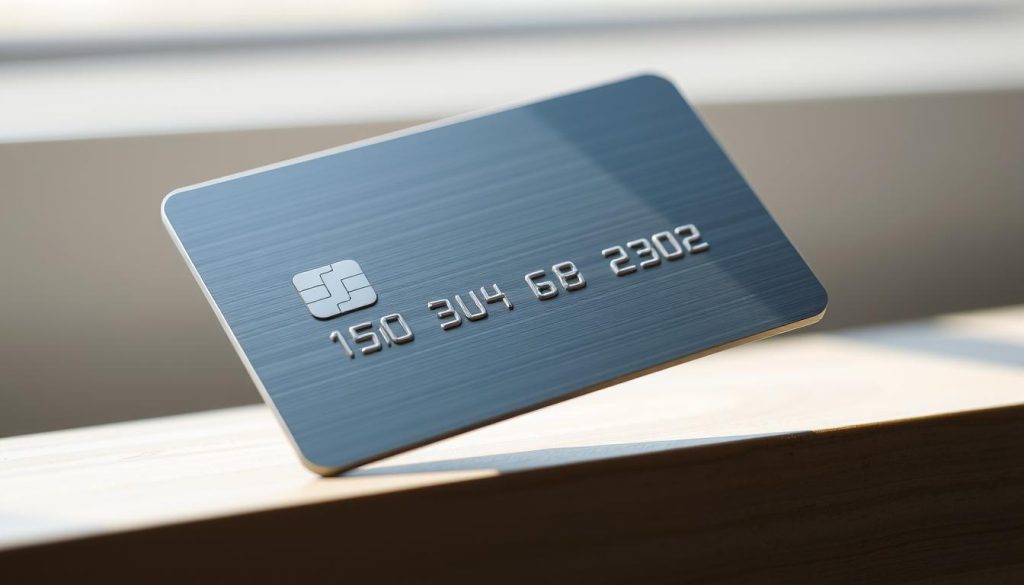Did you know that up to 60% of transactions in local markets rely on the East Caribbean Dollar? Understanding the official currency is essential for a smooth travel experience. Without proper planning, you could face unnecessary fees or challenges when managing your money abroad.
This guide helps you navigate currency and payment methods with ease. From using cards to finding reliable ATMs, we’ve got you covered. Planning ahead ensures you avoid hidden costs and enjoy seamless transactions during your stay.
Whether you’re booking a hotel or exploring local markets, knowing the best financial strategies can make all the difference. Stay tuned for tips on exchange rates, smart payment methods, and more. Your journey starts here!
Understanding Dominica’s Currency Landscape
Navigating the currency landscape is key to a hassle-free trip. The official currency here is the East Caribbean Dollar (XCD), which is pegged to the US Dollar at a fixed rate of 2.70 XCD to 1 USD. This stability ensures your money retains its value during your stay.

Official Currency Overview
The East Caribbean Dollar is widely accepted across the island. You’ll find it used in local markets, hotels, and restaurants. While some places may accept US Dollars, you’ll often get a better deal using the local currency.
Exchange Rate Insights and Mid-Market Rates
Understanding the exchange rate is crucial for smart spending. The mid-market rate is the real rate banks use to trade currencies. Many currency exchanges add a markup, so checking the live USD/XCD mid-market rate ensures you get a fair deal.
Here are some tips to avoid overpaying:
- Compare rates at airports and city centers. City exchanges often offer better rates due to competition.
- Decline dynamic currency conversion at restaurants or shops. This service often comes with hidden fees.
- Keep an eye on small fees, like tips or service charges, which can add up over time.
By staying informed, you can make every dollar count and enjoy a seamless financial experience during your trip.
Planning Your Currency Exchange and Payment Strategies
Planning your finances before your trip can save you time and money. Exchanging your USD to East Caribbean Dollars (XCD) ahead of time ensures you get better rates and avoid unnecessary fees. This section will guide you through smart strategies for managing your money efficiently.

Exchanging USD to XCD Ahead of Your Trip
Exchanging your money before you arrive offers several advantages. You’ll often find better rates at local banks or currency exchange offices in your home country. This approach also saves you the hassle of finding a reliable exchange service upon arrival.
Here’s why pre-trip exchanges are beneficial:
- You avoid long wait times at airport or hotel exchanges.
- You can compare rates and choose the most competitive option.
- You’ll have local currency ready for immediate use, like transportation or small purchases.
Monitoring the exchange rate trends can help you decide the best time to convert your money. Apps like Wise or XE provide real-time updates to keep you informed.
Avoiding High Airport and Hotel Exchange Fees
Airports and hotels are convenient but often charge higher fees for currency exchange. These services may also offer less favorable rates compared to local banks or authorized exchange offices.
To save money:
- Decline dynamic currency conversion at shops or restaurants, as it often includes hidden fees.
- Use a credit card with no foreign transaction fees for larger purchases.
- Plan your withdrawals to minimize ATM fees by taking out larger amounts less frequently.
By being proactive, you can avoid unnecessary costs and make the most of your travel budget. A little preparation goes a long way in ensuring a smooth financial experience.
Using Travel Cards and the Wise Multi-Currency Card
Managing your money abroad just got easier with travel cards. These tools are designed to simplify your financial experience, offering low fees and real-time currency conversions. Whether you’re a frequent tourist or a first-time traveler, a travel card can save you time and money.

Benefits of a Travel Debit Card
Travel debit cards are a smart way to handle expenses overseas. They minimize foreign transaction fees and provide enhanced security. Unlike traditional bank cards, they’re tailored for international use, making them ideal for everyday spending.
Here’s why they’re a great choice:
- Low fees for withdrawals and purchases.
- Real-time currency conversions at competitive rates.
- Easy management via mobile apps.
How to Set Up Your Wise Multi-Currency Card
The Wise Multi-Currency Card is a top pick for travelers. It allows you to hold and spend in multiple currencies, ensuring you always get the best rates. Setting it up is simple and can be done in a few steps:
- Download the Wise app and create an account.
- Verify your identity with the required documents.
- Add funds to your account in your preferred currency.
- Order your card and activate it upon arrival.
This card is perfect for tourists who want flexibility and cost-effectiveness. With low transaction fees and real-time updates, it’s a reliable way to manage your money.
| Feature | Benefit |
|---|---|
| Low Fees | Save on foreign transactions and withdrawals. |
| Multi-Currency Support | Hold and spend in multiple currencies. |
| Mobile App | Manage your funds anytime, anywhere. |
Navigating ATMs and Secure Cash Withdrawals
Accessing cash safely and efficiently is a top priority for any traveler. Knowing where to find reliable ATMs and how to avoid extra fees can save you time and money. This section covers everything you need to know about secure cash withdrawals.
Finding Reliable ATM Locations
In major cities and tourist hubs, ATMs are widely available. Look for machines operated by reputable banks like Banco Popular or Scotiabank. These options are often safer and offer better rates compared to standalone ATMs in smaller markets.
Always choose ATMs in well-lit, secure areas. Avoid using machines in isolated spots, especially at night. Planning ahead ensures you stay within your budget and avoid unnecessary risks.
Tips to Minimize ATM Fees and Extra Charges
ATM fees can add up quickly, but there are ways to reduce them. First, opt for larger withdrawals to minimize the number of transactions. This helps you avoid multiple charges and keeps your budget intact.
Always select the local currency option when prompted. Dynamic currency conversion often includes hidden fees. Check the ATM screen for any additional charges before completing your transaction.
Here are a few more tips to save money:
- Use ATMs affiliated with major banks for lower fees.
- Compare withdrawal options to find the most cost-effective one.
- Keep an eye on your bank’s foreign transaction policies.
By following these steps, you can ensure secure and affordable access to cash during your trip.
Smart Payment Methods for Everyday Transactions
Handling everyday transactions smoothly is a must for any trip. Whether you’re dining at a restaurant, checking into a hotel, or exploring local services, knowing your payment options can save you time and money. This guide helps you navigate the best ways to pay while avoiding unnecessary fees.

Paying at Hotels, Restaurants, and Services
Many establishments on the island accept debit cards and credit cards, making them convenient for larger purchases. However, carrying some cash is still essential for smaller transactions like tips or local markets. Here’s a quick breakdown:
- Hotels: Most hotels accept cards, but some smaller lodgings may prefer cash. Always confirm payment methods when booking.
- Restaurants: While cards are widely accepted, tipping in cash is often appreciated. A 10-15% tip is standard for good service.
- Local Services: For tours, taxis, or small shops, cash is usually the preferred method.
Handling Dynamic Currency Conversion
When using your card abroad, you may encounter dynamic currency conversion. This service allows you to pay in your home currency but often comes with hidden fees and poor exchange rates. Here’s how to avoid it:
- Always choose to pay in the local currency (East Caribbean Dollar) when prompted.
- Check your receipt to ensure the transaction was processed in the correct currency.
- Use a debit card with no foreign transaction fees to save on costs.
By following these tips, you can ensure you’re getting the best value for your money. A little preparation goes a long way in making your trip seamless and enjoyable.
| Payment Method | Best Use Case |
|---|---|
| Debit Card | Larger purchases, hotels, and restaurants. |
| Cash | Tips, local markets, and small services. |
| Credit Card | Backup for emergencies or larger expenses. |
Dominica: Ultimate Travelers Guide to Currencies & Payments
Smart financial planning can transform your travel experience from stressful to smooth. By understanding the local payment landscape, you can avoid unnecessary fees and enjoy your trip to the fullest. Here’s a recap of the key points to ensure a seamless financial journey.
Mastering the Official Currency
Familiarize yourself with the East Caribbean Dollar (XCD), the official currency. While some places may accept USD, using the local currency often saves you money. Always check the mid-market rate for fair exchanges.
Pre-Trip Currency Exchange
Exchanging your money before your trip can save you time and reduce costs. Avoid airport and hotel exchanges, as they often charge higher fees. Instead, use local banks or authorized exchange offices for better rates.
Efficient ATM Usage
When withdrawing cash, choose ATMs operated by reputable banks. Opt for larger withdrawals to minimize fees and always select the local currency option to avoid dynamic currency conversion charges.
Travel Cards for Convenience
Travel cards like the Wise Multi-Currency Card offer low fees and real-time currency conversions. They’re perfect for everyday spending and provide added security for your funds.
Best Practices Checklist
- Carry a mix of cash and cards for flexibility.
- Decline dynamic currency conversion to avoid hidden fees.
- Monitor exchange rates to get the best value for your money.
- Keep emergency funds in a secure location.
By adopting these strategies, you can minimize costs and maximize convenience during your trip. A little preparation goes a long way in ensuring a stress-free and enjoyable travel experience.
Conclusion
Taking control of your finances before your trip ensures a stress-free experience. By planning ahead, you can avoid unnecessary fees and make the most of your budget. Tools like the Wise Multi-Currency Card offer convenience and low fees, making them ideal for everyday spending.
Combine cash and debit cards for flexibility. This approach helps you manage expenses effectively, whether you’re dining out or exploring local markets. Always choose the local currency option to avoid hidden fees during transactions.
Smart withdrawal practices, like using ATMs from reputable banks, can save you money. Planning your exchange currency needs in advance ensures you get the best rates. A little preparation goes a long way in creating a seamless financial experience.
Review these tips and create a custom plan for each month of travel. With the right strategies, you can enjoy your trip without worrying about your finances.
The above is subject to change.
Check back often to TRAVEL.COM for the latest travel tips and deals.
Here are some Tours & Sightseeing suggestions that might pique your interests!






